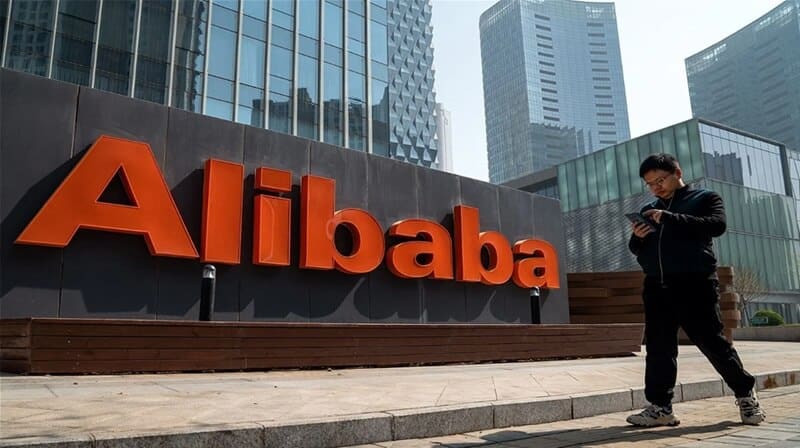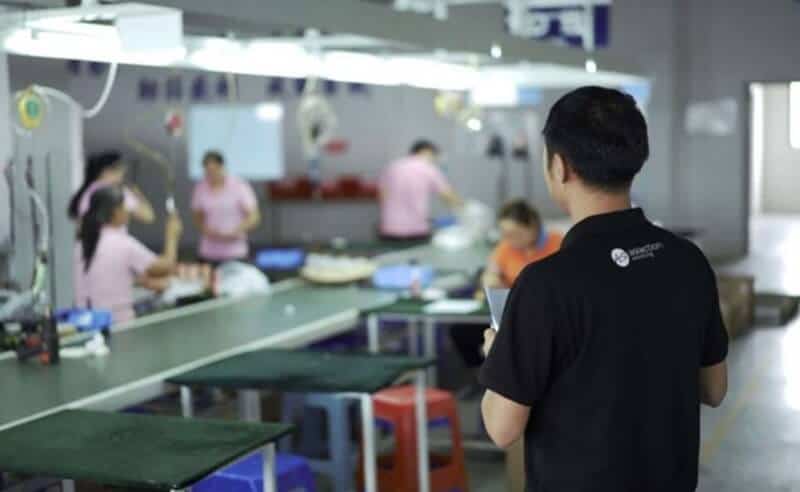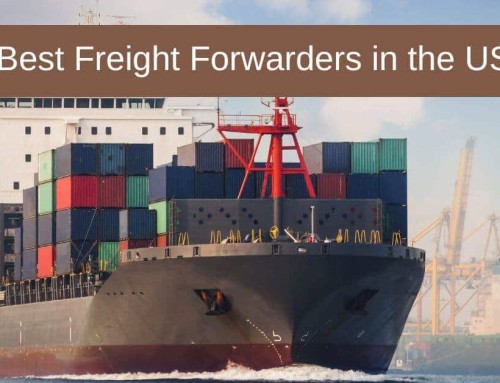How to Buy from China Directly in 2024 | Your Complete Guide

In April 2024, the value of U.S. imports from China skyrocketed to a sizable $31.6 billion (Statista).
Importing goods directly from China is a big part of world trade since there are such significant levels of commerce.
How can you exploit this massive market to obtain quality products at competitive rates?
If you want to buy a product either as an individual or as a business owner then it is better if you opt for buying directly from China because it offers various benefits.
Make informed and successful purchases from China in 2024 with the help of this manual.
1. Top 2 Manufacturers Marketplaces in China
On the topic of buying directly from China, Alibaba and Made in China are two of the most common websites to look at. They both come with special advantages that make them ideal for sourcing supplies.
Alibaba
Alibaba is among the biggest online market platforms in the world. It serves as a platform that connects buyers with manufacturers and suppliers from China and other countries. The platform offers a diverse range of items such as electronics, clothes, etc, and is thus favored by many buyers.

Suppose you want custom-made T-shirts for your boutique store; you will find several suppliers offering different designs, fabrics, and other customizations on Alibaba. You can check prices, read feedback, or even request samples before buying in bulk.
Made in China
Made in China is another well-known marketplace that specializes in connecting buyers with Chinese manufacturers. It focuses mainly on providing detailed information about suppliers including their certifications and production capabilities.
This platform is especially useful for firms intending to create long-lasting associations with dependable producers.
For example, you are sourcing industrial machinery for your company. Made-in-China provides a searchable list of manufacturers specializing exactly in the kind of machine you require. You can view their profiles as well as projects they have done before or even plan visits to know whether they meet your needs.
Difference between these two marketplaces
| Feature | Alibaba | Made in China |
|---|---|---|
| Product Range | Extensive, covers various categories | More specialized, focuses on manufacturing capabilities |
| Supplier Information | Basic details with reviews and ratings | Detailed information, including certifications and factory audits |
| Transaction Security | Trade Assurance for secure transactions | No similar program, but detailed supplier verification |
| User Experience | User-friendly interface with buyer protection options | Detailed view of supplier capabilities, ideal for long-term relationships |
| Customization and Bulk Orders | Suitable for small to medium orders with customization options | Best for custom orders and bulk manufacturing |
2. Finding Reliable Suppliers
One of the most critical steps in buying from China directly is finding reliable suppliers. This section will guide you through the essential steps, including researching suppliers and vetting and communicating with them.
Researching Suppliers
If you want to find reliable and high-quality manufacturers, it is essential that you research suppliers effectively. There are several ways of finding out the most suitable supplier for your purpose.
Use Online Marketplaces
These online marketplaces such as Made in China or Alibaba.com offer good starting points when looking for the best suppliers for the category you are interested in.
On these websites, one can choose from a variety of products depending on their preferences and read about people’s experiences with different sellers.
For instance, if you need electronic items, then there will be a list of potential companies where you can narrow down your search by specifying the price range, product specifications as well as minimum order quantities.
Check Supplier Ratings and Reviews
Most marketplaces have ratings given by people who have purchased products from them.
These ratings can help tell whether the seller is dependable or not and also provide insights into the quality of goods or services.
A firm rated highly with satisfying reviews is more likely to be trusted than one that has negative feedback.
Verify Business Licenses and Certifications
Good vendors should possess business licenses that are appropriate as well as industry certifications from legitimate sources throughout the world.
In some cases, this information may appear on their pages in online markets like Alibaba. ISO 9001 certification means the company follows worldwide accepted standards for quality management.
Visit Trade Shows
While the Canton Fair held in Guangzhou is one such trade fair, there are many others including China International Import Expo among others where it would be possible to meet suppliers personally.
Such events enable buyers to examine the products before purchasing them directly from suppliers while fostering business relationships at times leading to new suppliers’ identification ability besides providing chances for negotiating favourable terms.

Vetting and Communicating with Suppliers
After listing down it’s time for vetting and communicating.
Request Sample Products
Before you place a big order, ask if you can have samples. This way, you will be able to determine the quality of the product and ensure it is according to your standards. As an example, in case you are sourcing for custom-made furniture; receiving a sample can help you verify the material quality as well as craftsmanship.
Conduct Background Checks
Utilize third-party services to do background checks on suppliers.
Businesses like SGS and Bureau Veritas provide supplier verification services which entail factory audits and business verifications. This step is particularly important when placing high-value or bulk orders.
Communicate Clearly
Effective and clear communication is paramount. Use simple language that leaves no doubt and avoid slang words.
All these details should be included in your communication; product specifications, their volume, packaging instructions plus delivery schedules among other things.
For instance, when ordering custom packaging boxes have accurate measurements; state the materials used as well as design specs too.
Negotiate Terms
Price terms like payment methods and delivery schedules must be negotiated accordingly without any hesitation at all.
3. Manufacturers or Third-Party Suppliers – When to Choose
Every choice has its own set of pros and cons, depending on what someone requires.
If you have specific product requirements or need custom-made items, choosing manufacturers can be useful.
This is because manufacturers produce their goods directly so that you can get more input on things like specification, quality, and design of the product.
Such a move is appropriate for businesses trying to build a unique brand with customized products. For example, if you need electronics that have specific features which must be developed according to your specifications working together with a manufacturer will make this possible.
On the other hand, third-party suppliers act as middlemen between manufacturers and buyers. Most times they have large numbers of products ready for sale.

This is beneficial if one requires various commodities or smaller quantities. Third-party suppliers generally deal with logistics and quality control, making it easier and faster for you.
A case in point is when one wants to stock several household items for sale at his/her retail store; such needs would be best fulfilled by a third-party supplier.
Below is a table comparing manufacturers and third-party suppliers:
| Criteria | Manufacturers | Third-Party Suppliers |
|---|---|---|
| Customization | High – Can produce tailored products | Low – Limited to existing products |
| Product Range | Narrower focus – Specialized in specific products | Broader range – Offers various products |
| Control Over Quality | Higher – Direct oversight of production | Moderate – Relies on supplier’s quality control |
| Lead Time | Longer – Time required for customization and production | Shorter – Products usually available in stock |
| MOQ (Minimum Order Quantity) | Higher – Requires larger orders to justify production costs | Lower – Can accommodate smaller orders |
| Cost | Potentially lower per unit for large orders | Potentially higher per unit due to intermediary margins |
| Risk | Higher – Directly responsible for quality and logistics | Lower – Supplier handles logistics and quality control |
| Logistics | More complex – You handle shipping and import duties | Simplified – Supplier often manages these aspects |
4. Things to Consider Before Placing a Order
1)Preparing to Buy
Identifying Your Needs
In order to start buying, you have to know exactly what your specific requirements are. It means knowing the nature of the goods you require, their characteristics, and your budget.
To begin with, indicate all the things you need specifying their sizes and shapes as well as any unique aspects in them.
For example, if you plan on importing kitchen appliances describe the particular models, size specifications, voltage needs, and available colors. You will be able to communicate with suppliers more easily and thus no conflicts might occur once you understand what exactly you want.
Legal and Regulatory Requirements
If you want to import products from China, then understanding the legal and regulatory requirements is important so as to avoid any potential issues and make smooth transactions.
- Know Import Rules: Different countries have different regulations regarding imports. Research your country’s specific requirements, for example, under US law food imports must comply with FDA guidelines. This way you will avoid delays and fines for non-compliance.
- Check for Required Certifications: Some products need certifications to be sold legally in your country. For instance, electrical items may be required to meet CE marking standards in Europe or FCC regulations in America. Before making an order on any item check if its supplier provides required certification papers.
- Product Labeling Requirements: Confirm that the labeling criteria have been satisfied by your products in this state. These criteria are contained in details like; where it came from, safety warning signs, and how it should be used. A good example is toys which should have appropriate safety labels and warnings according to the local regulations.
- Customs Fees and Taxes: It is necessary to familiarize yourself with customs duties and taxes that apply when you bring goods into the country. For example, find out what tariff rates apply to clothes imported into the country. By doing this you will be able to plan your budget well so as not to incur unplanned expenditure.
- Compliance with Safety Laws: Ensure that consumers are safeguarded through adherence by these goods to safety standards hence preventing such problems as sharp edges or toxic materials common while importing baby furniture.
- Involve Customs Brokerage Company: Consider hiring a broker who specializes in customs services during the importation process. They can guide you through the maze of complex rules, do paperwork, and ensure all formalities are met at every stage of the clearance process. This advice may ease especially first-time exporters’ tasks or complicated consignments too.
2)Placing an Order
After you have identified reliable suppliers and done your homework, the next thing is to place an order. This involves negotiating of terms and making the purchase.
Negotiating Terms
Negotiating terms is very important in ensuring a successful transaction. Here are some key points to concentrate on:
Price: Always haggle over price for a better deal. If you’re placing a large order, ask for bulk discounts. For instance, negotiate a lower per-unit cost compared to smaller orders when ordering 1,000 units of an item.
Payment Terms: Discuss about payment terms. Some common ones are paying a deposit first and then the balance upon arrival or after receipt of shipping documents. Like you may agree with the supplier on a 30% deposit and the remaining 70% after shipment.
Delivery Time: Agree on delivery time with your supplier. It ensures that products reach you at the required time as well as helping you manage your stock levels. For example, if there is need for seasonal sale of goods, it could be agreed that deliveries be made on an exact date.
Incoterms: Explain the shipping terms through Incoterms (International Commercial Terms). These determine who bears the costs of shipping, insurance, and risks involved among others. For example, if CIF (Cost Insurance Freight) applies then this means the cost will be borne by the shipper/consignee until they arrive at the destination port while FOB (Free On Board) indicates that up until the goods get onto the ship other party pays expenses.
Quality Assurance: Ensure that the supplier agrees on quality standards with you. These may involve third-party inspections or submission of pre-shipment samples. To take an example, before placing a full order require sample batch testing in case of importing electronics.
Making the Purchase
After reaching an agreement, you can now proceed to buy. Here is how to go about it:
Purchase Order: The purchase order (PO) must be very detailed and should indicate all the agreed-upon terms including product specifications, quantities, prices, payment terms, delivery dates, and any special requirements. It is a binding contract between you and the supplier.
Payment: You should adhere to the agreed payment terms. Employ protected methods of payment like electronic funds transfer on online payment platforms. For example, sites such as Alibaba offer Trade Assurance where your money will be refunded in case the supplier does not adhere to the agreed terms.
Shipping Arrangements: Plan shipping with your respective supplier. Know the shipping method used and tracking information available from carrier services. If for example, you are importing goods in bulk from Asia would it be cheaper or faster by sea or air?
Import Documentation: Make sure that all import-related documents are prepared in due time. This includes commercial invoices, packing list bills of lading among others being supplied accordingly; such as health certificates when importing food products or compliance documents.
Customs Clearance: A customs broker can help facilitate customs clearance procedures for you. They will assist fill out paperwork and ensure that these comply with import regulations for instance if one is importing drugs a customs broker will make sure there is adherence to all regulatory standards.
Receiving the Goods: Check items carefully once they arrive so that you can confirm whether they conform to the set quality standards. Should anything happen call immediately on the vendor so that he can correct things promptly. In case some quantities of goods are damaged upon receipt of them take pictures showing this damage while calling your seller for compensation or replacement.

3)Shipping and Logistics
Managing shipping and logistics is crucial when purchasing directly from China. This guarantees that your products reach you on time and in a good state.
Choosing a Shipping Method
When buying from China, it is important to choose the right shipping method that balances cost and delivery time.
Air freight, for instance, is the fastest which makes it ideal for high-value goods or those needed urgently such as electronics.
Despite being more costly, the delivery period takes only days. On the other hand, sea freight is an economical option for shipment of large orders like furniture but it usually takes several weeks.
If you need something that combines both speed and cost efficiency then rail freight can be very beneficial especially if you are dealing with places interconnected through railway networks in those regions.
Small packages or samples may be sent by international couriers such as DHL, FedEx, or UPS which offer door-to-door services with tracking thus making them ideal for small emergency deliveries.
Customs and Import Process
Often Customs clearance would require you to understand how smoothness should happen in order not to have legal issues. First, prepare some essential documents such as commercial invoice, packing list, and bill of lading among others.
Determine your products’ Harmonized System (HS) code to know what duties and taxes will apply; a case example here would be the correct HS code for textiles when importing to avoid unexpected tariffs.
Check whether your products comply with all regulations and standards required by law and also ensure they have proper certifications that rule out delays in clearing with customs authorities.
In managing this process especially for first-time importations or complicated consignments, employ a licensed customs broker who will handle documentation while also ensuring compliance with prevailing laws.
4)Picking the Right Freight Forwarder Agency
- Experience of import over a long time to China.
- Global coverage on strong support for trustworthy services.
- There are comprehensive products like customs clearance, warehousing, and insurance.
- Positive online reviews and recommendations.
- Clear, transparent price with no hidden costs.
- Responsive communication and regular updates
- Dependable insurance cover during transit of goods
- Efficient management and real-time tracking
- Capacity to handle different cargos as well as adaptability for the needs.
- Expertise in global trade regulations and adherence.
5)Managing Risks
Common Risks and How to Avoid Them
When you buy directly from China, you can encounter certain risks. Here’s how to avoid them:
- Quality Issues: Prior to making large orders, ask for samples so as to assess the quality.
- Scams: Have suppliers checked out by third parties and look at customers’ feedback.
- Shipping delays: Use reliable forwarding agents and keep close tabs on shipments.
- Customs problems: Make sure all documents are correct and complete in order to avoid any delay.
- Hidden costs: Request that quotes be clarified and ask about upfront fees too.
- Communication Gaps: Establish unambiguous communication lines and confirm all details via writing.
- Intellectual Property Theft: Protect your rights by registering trademarks and patents in China.
- Payment Risks: Secure your payment through the use of escrow services or letters of credit.
Building Long-Term Supplier Relationships
- Consistently: Always place orders on time to demonstrate commitment and reliability.
- Honoring Cultural Differences: Know and honor the cultural norms and practices of your suppliers.
- Positive Response: Give positive feedback whenever they meet or exceed your expectations.
- Problem Solving: Deal with issues promptly, working together to identify solutions.
- Openness: Be open about your requirements, anticipated results, and a change of arrangement.
- Equitable Negotiation: Agree on terms that are equitable for both parties in the contract.
- Prompt Payment: Pay all dues at the agreed times to develop trust and creditworthiness.
- Private Meetings: When possible, make personal visits to them to build the relationship.
- Recognition: Recognize their efforts towards achieving certain objectives.
FAQs
1. What shipping method should I choose for my goods?
Your choice will depend on what you prioritize. In case you want to deliver quickly and are dealing in highly-priced goods, it is recommended that you use air freight.
Sea freight becomes cheaper as the size of the shipment increases since the cost per unit decreases. Rail might be a good compromise between speed and expense.
2. How do I handle customs and import duties?
Make sure all necessary documents are correct and complete. If this is your first time as an importer, involving a customs broker can make it easier for you. They assist in avoiding delays as they have expertise in regulations.
3. What should I look for in a freight forwarder?
Find a forwarder with a good reputation, a broad network, and comprehensive services.
Choose one with clear pricing structures, favorable testimonials from other clients online, and who can organize every detail of logistics seamlessly.
4. How can I avoid common risks when buying from China?
Risk management measures include; checking quality through samples before doing large orders, third-party verification of suppliers’ credibility, working with reliable freight forwarders who know all documentation required in the shipping process and payment must be secured using escrow service among others.
Why Choose Winsky Freight
We have been established for over 10 years now at Winsky Freight meaning experience counts while handling your international shipments efficiently.
Our clients consistently love our fast response and highly trained staff members who are capable of handling express consignments yet still ensuring that they get to the intended places in good time.
Choose Winsky Freight for reliable and efficient shipping.
Contact us now for a free quote and discover how much you can save on your next shipment from China.




Leave A Comment